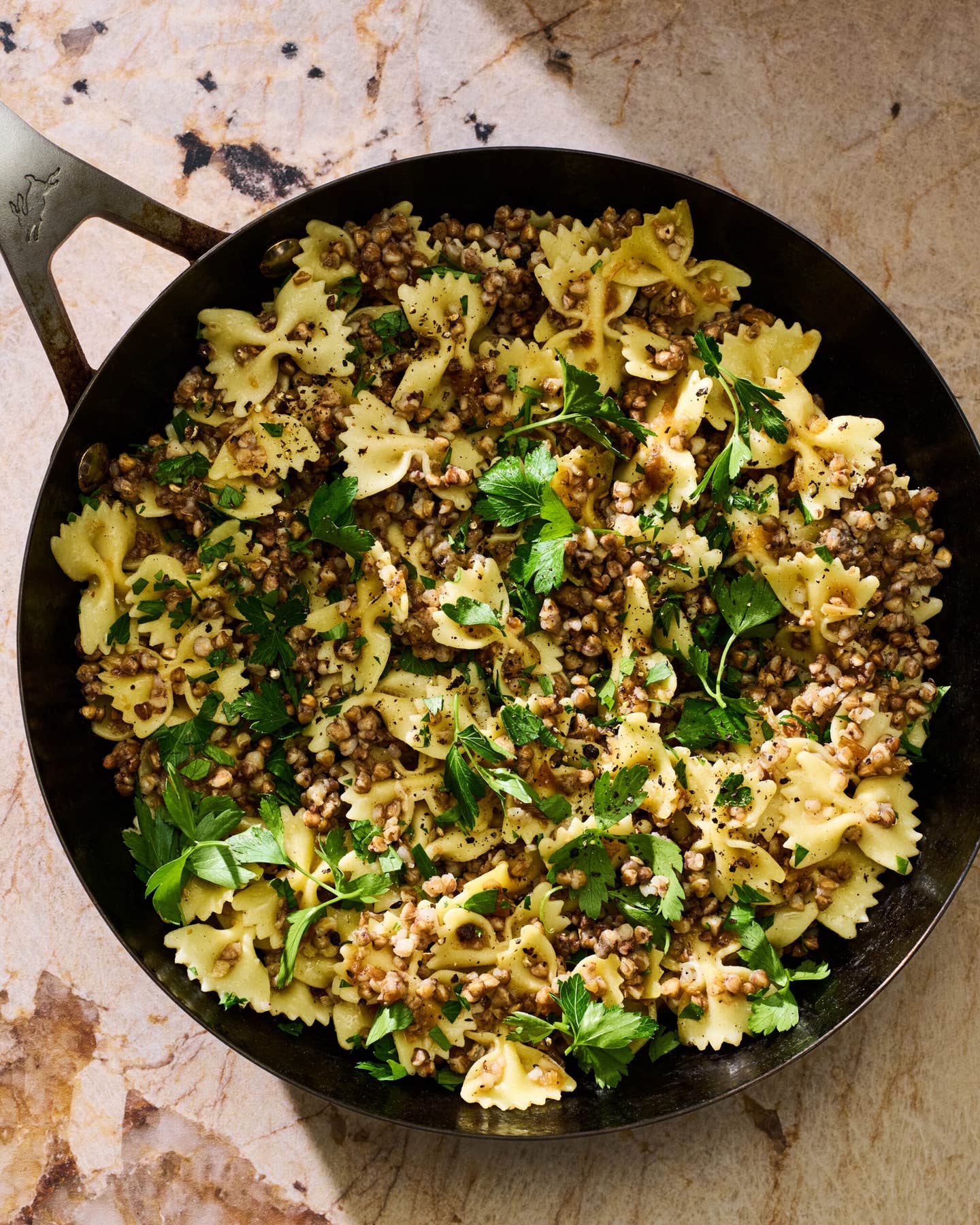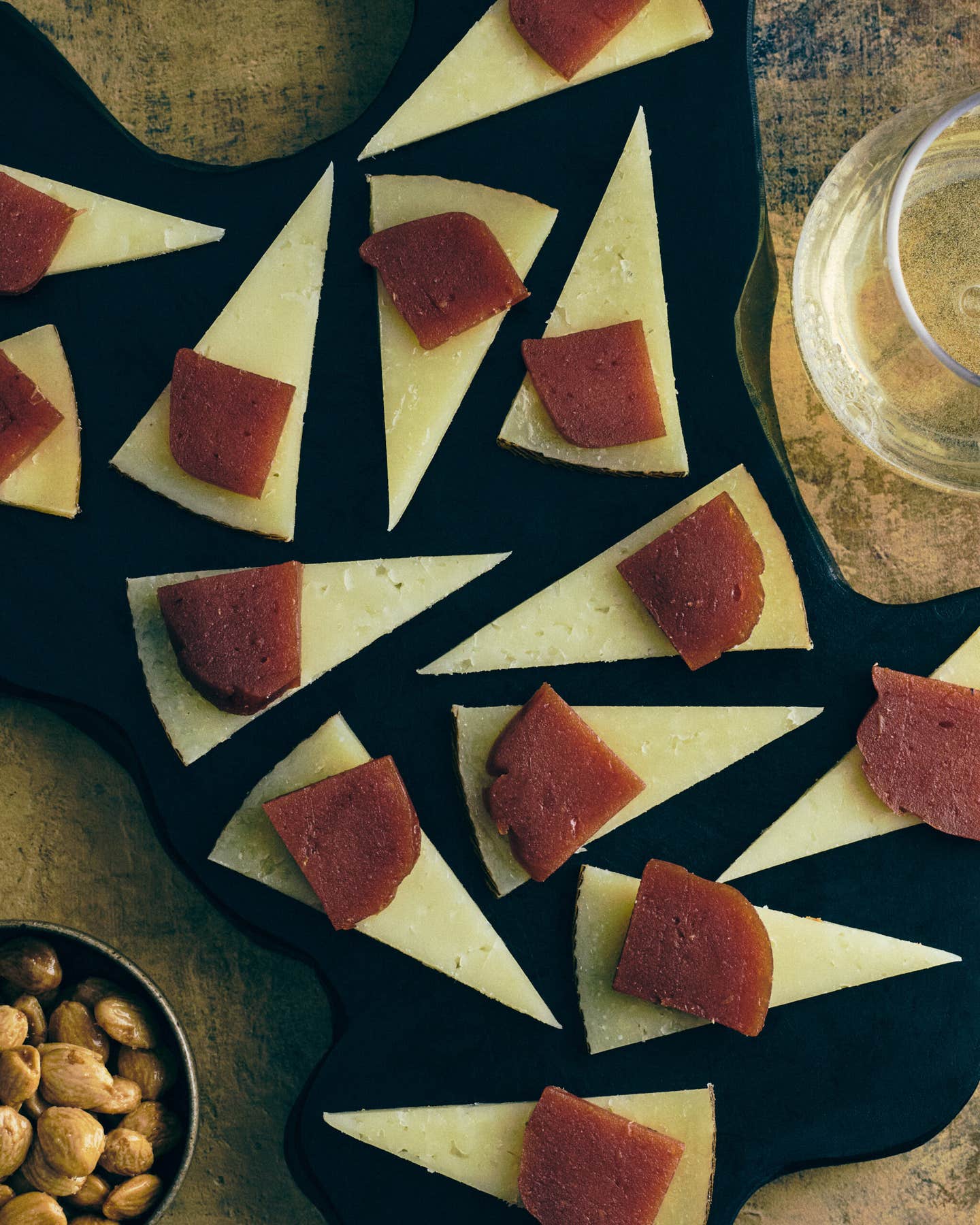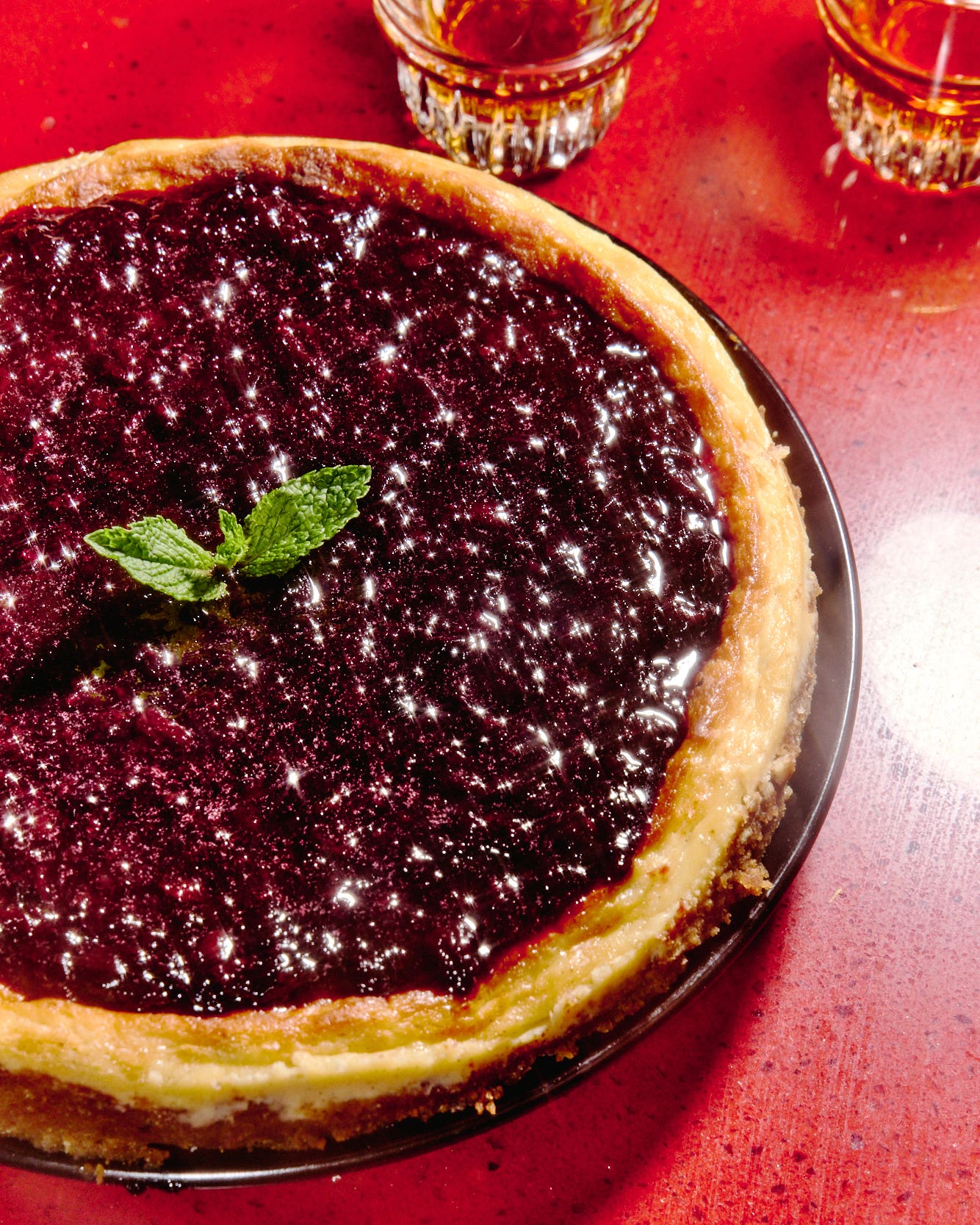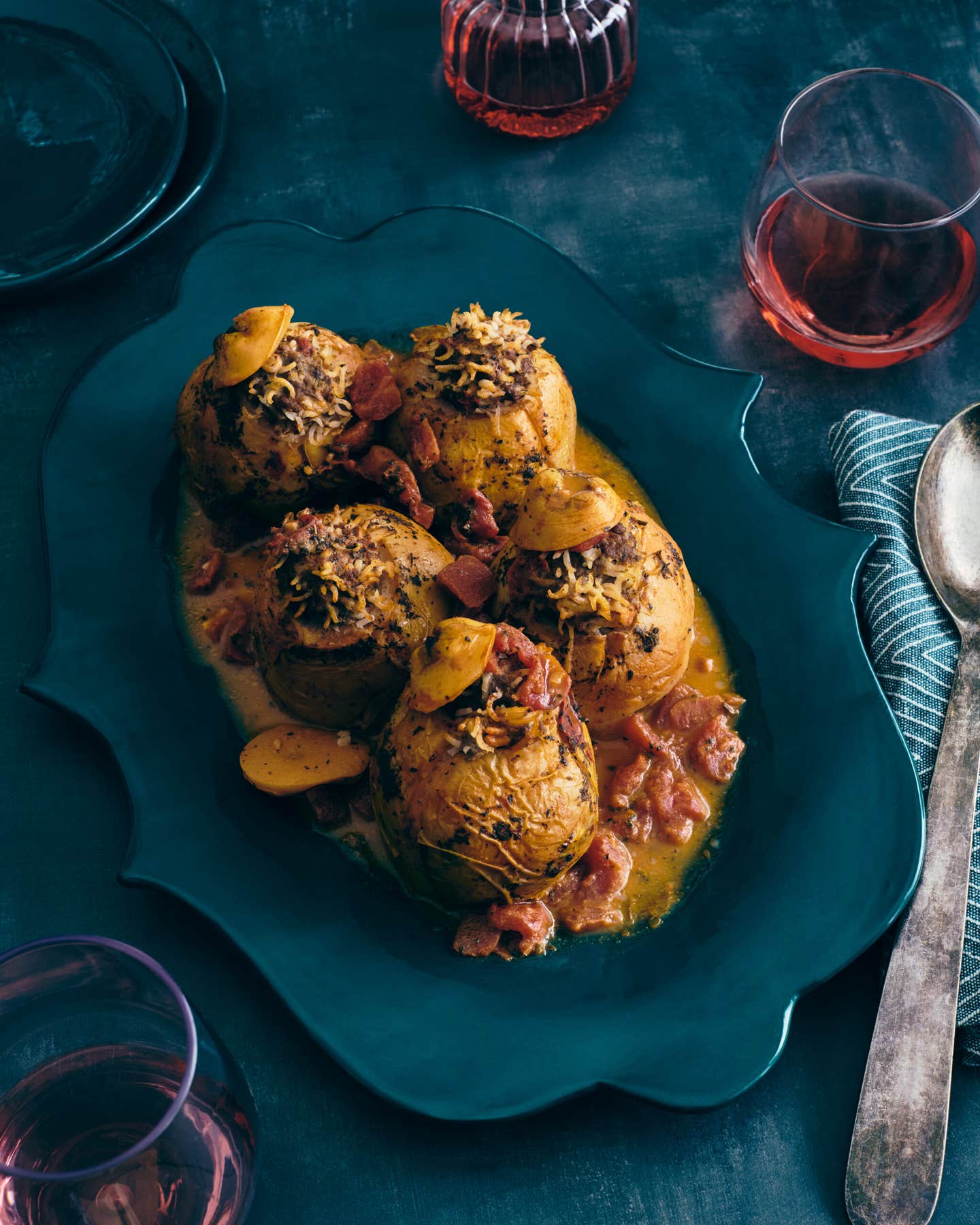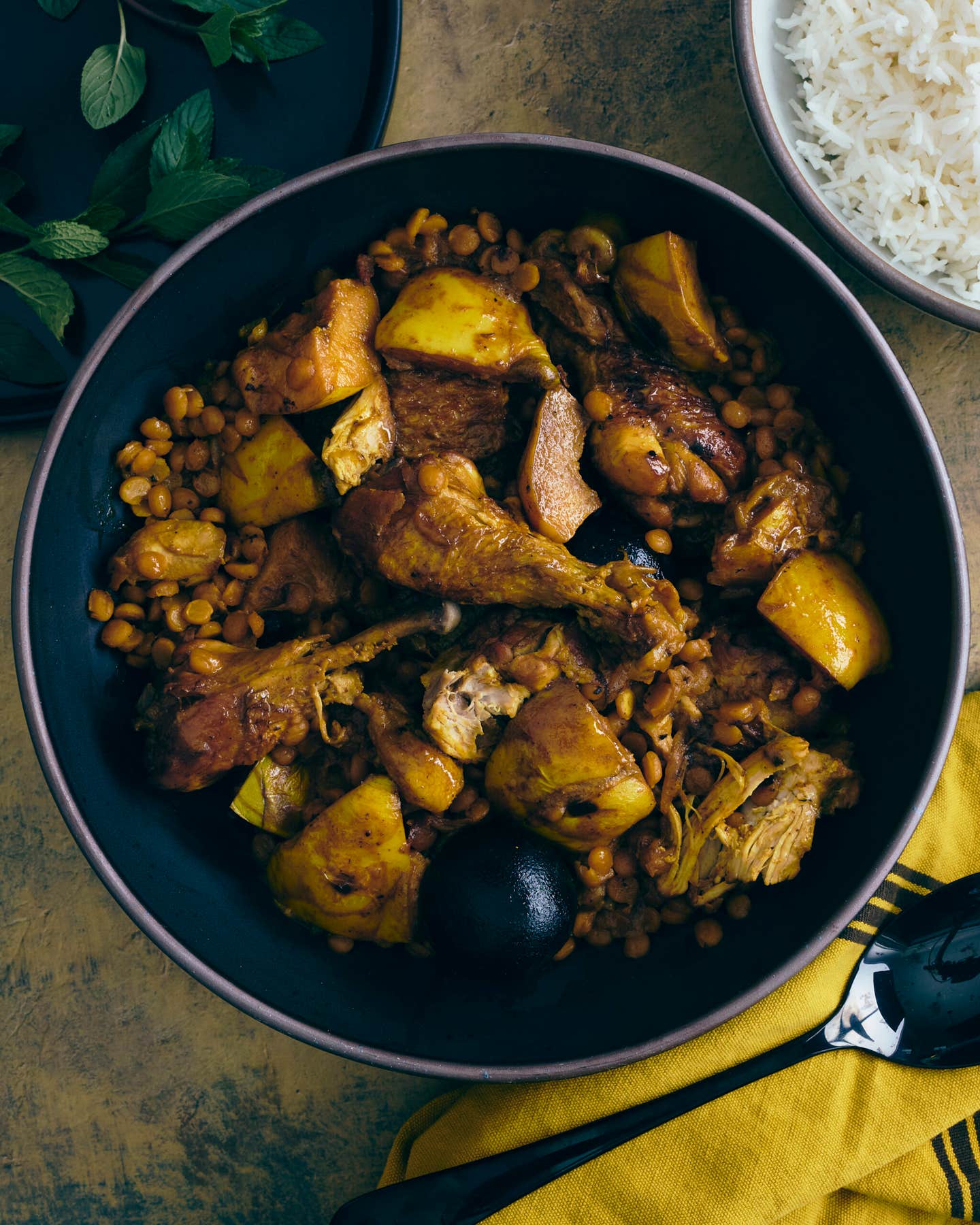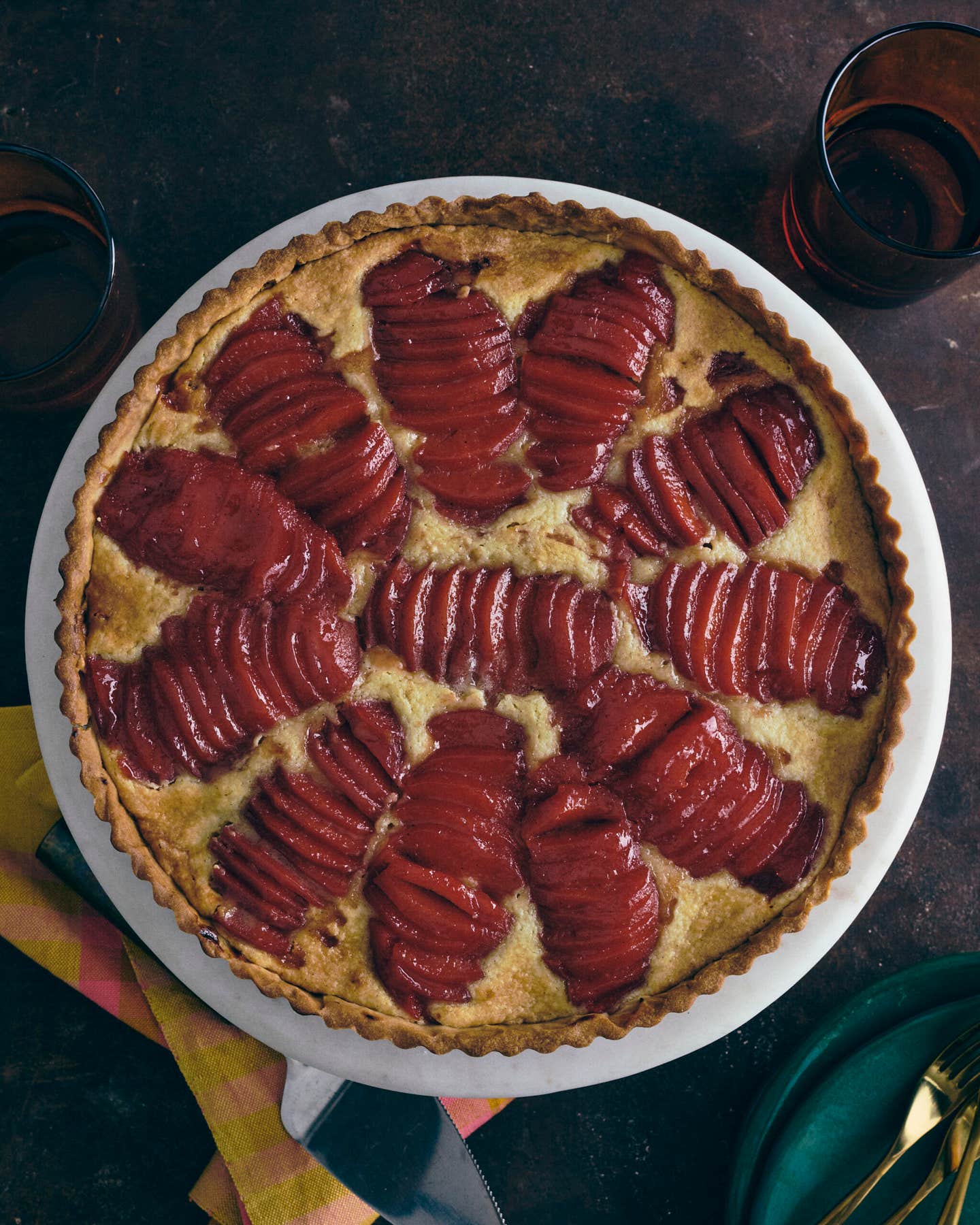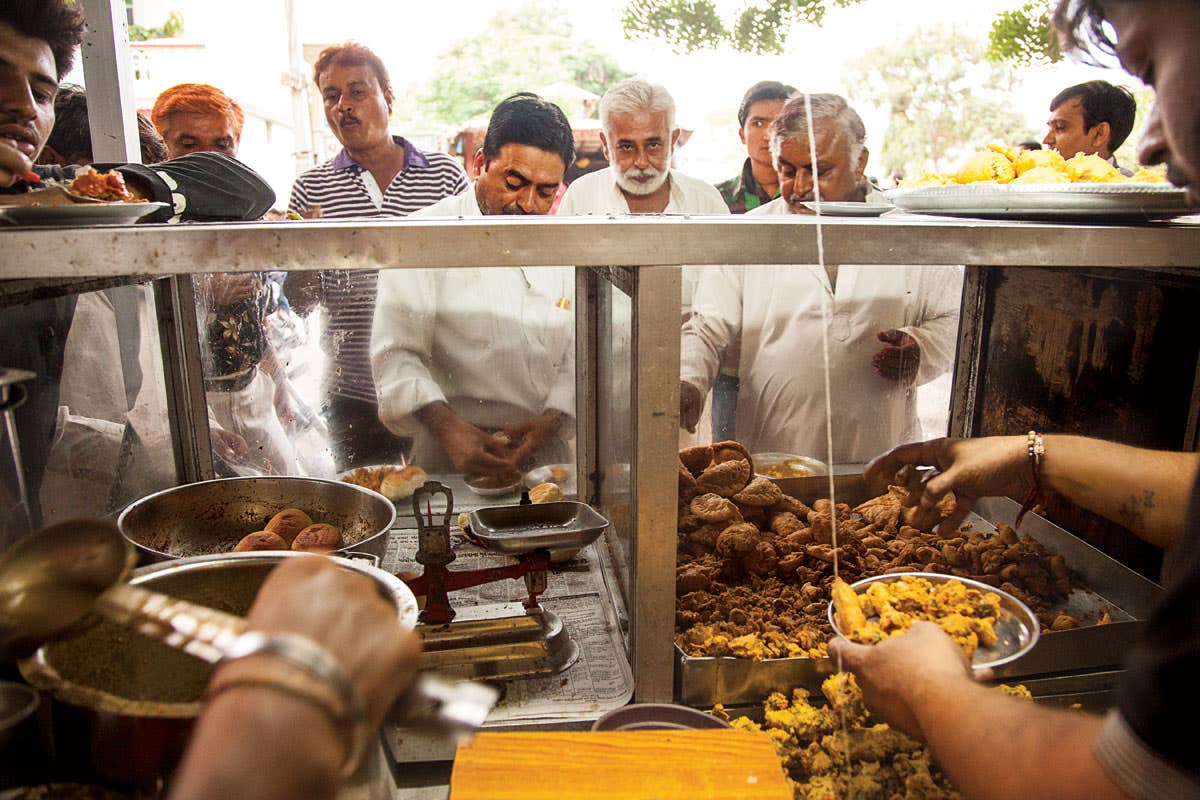
A Hunger For Home
For Sindhi people living in India, cooking provides a vital connection to their roots
Growing up, I moved all over the world with my parents, professors who went wherever the jobs were. Before settling in Los Angeles at 26, I never lived in one town for more than a few years, and I felt rootless. Food became a way for me to connect the dots between the places I had been and the ones I was going to. I'd known no one else who felt similarly—until I met the family of my husband, Sanjiv Bajaj. The Bajajs are Sindhi, a people from the Sindh in the Indus Valley, a northwest corner of the Indian subcontinent that became part of the newly formed Pakistan after independence from the British in 1947. While many Sindhi Muslims remained in the Sindh afterward, most Sindhi Hindus headed into India, never to return. Sanjiv's grandparents ended up in Mumbai, 900 miles from where they were born.
In some ways, Sanjiv's family was like the one I grew up in; they, too, were uprooted. But the difference was that this family carried their home with them, in their hearts and in their cooking. Whereas my mother made beef Stroganoff and the food of Maharashtra, the state in India where I was born, with equal flair, Sanjiv's mother and grandmother cooked only ancestral foods. Chickpea cakes in a rich tomato sauce; kadhi, a lentil stew; cardamom-spiced desserts—these were dishes that embodied their identity. Though prepared in a kitchen in Mumbai, the Bajaj family meal always pointed northward, toward the Sindh.
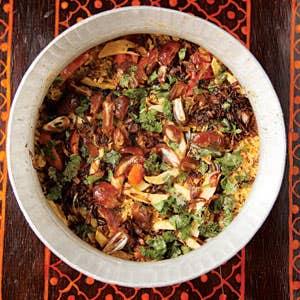
I had my first taste of Sindhi food at my in-laws' house in 1990. Sanjiv's mother, Madhu, made kadhi, a tart, peppery stew bolstered with okra and green beans. When we sat down to eat, the family showed me how to drench the rice in my bowl with just the right amount of soupy lentils. While Sanjiv, who was born in Mumbai and had never seen the Sindh, devoured his kadhi with gusto but without nostalgia, each spoonful seemed to transport his 74-year-old grandmother, Savitri, back to Shikarpur, the sleepy district capital on the Sindh's northern border.
At this first meal and many more to follow, Savitri took me with her on flights of reminiscence, vividly recalling lush, green rice fields, swaying date palms, fish swimming up the nearby Indus River from the Arabian Sea. A tiny woman with a keen mind, Savitri had married at 14 and cooked for her family ever since. I spent many afternoons listening, fascinated, as she described the foods of her younger years. The Sindh's arid climate was ideal for drying foods to preserve them, she told me, and so the cuisine used ingredients such as dried morels, crispy lentil crackers known as papad, and sun-dried vegetables, such as squash and lotus root, deep-fried and heavily seasoned to add a crunchy, spicy element to meals. Beyond that, the Sindh's location on the Silk Road meant that over the years it was influenced by Iranian, Arab, and central Asian cooking. Muslim rulers had controlled the Sindh for centuries; their influence remains in the prominence that meat has in Sindhi cuisine. And given the Sindh's past as part of the Mughal Empire, the luxuriant staples of Persian cooking—saffron, rose water, dates, almonds, and pistachios—are prized for both sweets and savory rice dishes.
My education wasn't confined to stories. Whenever I prodded Savitri for more information about a dish, she'd ask, "Shall we make it?" And a cooking lesson would commence. One of the first recipes I learned from her was for dharan ji kadhi. The golden bracelets on her arm jangled as she gently kneaded chickpea flour with cilantro, chiles, yogurt, and oil to make thick dumplings that she fried and then immersed in a delectable sauce of tomato, onion, and cilantro. For an appetizer, we made tuk, twice-fried potatoes that she cooked until just soft, then smashed with her palm. Right before we ate, she fried them once more. The chunks of potato, brightened with red chile and dried mango powders, were crisp and golden outside, steaming and tender within.
Over the next 20 years of visits and cooking, Sindhi flavors began to feel like my own. After Savitri passed away in 1997, Madhu took up where her mother left off. Then Sanjiv and I had our daughter, Keya. Although married life proved more complicated than either of us had expected, I still felt the same obligation that the Bajaj women had felt toward me to pass on the family's traditions to my child, so I cooked what Sindhi dishes I knew at our home in Los Angeles and became even more deliberate in my quest to better understand the cuisine. Madhu urged me to visit the twin towns of Adipur and Gandhidham in Gujarat, in northwestern India near the Pakistan border, where some Sindhis had settled after Partition. "Sindhis there have kept up traditions in ways we have not," she told me. "I'm sure their food is closer to its roots."
On my next visit to India, I followed her advice. I created lists of recipes to look into. I booked tickets. Then, two weeks before my trip, Sanjiv and I decided to separate, and in spite of all my preparations, I suddenly felt adrift. Planes to Gujarat flew from Mumbai, so I had made plans to visit Madhu before flying north. It was too late to change my itinerary; I headed to Mumbai anyway, wondering what this visit would be like now that my relationship with her son was changing.
I needn't have worried. Madhu greeted me as she always had, laying out a lunch of sai bhaaji, sauteed mashed greens that included fenugreek leaves. Sindhis love these fresh greens, which have a pleasing, intense bitterness that the dried leaves don't. I'd grown to love them, too. I mixed fluffy white basmati rice into the dish, along with a dollop of thick homemade yogurt. My mind was still in turmoil, but my senses told me to relax: I was home.
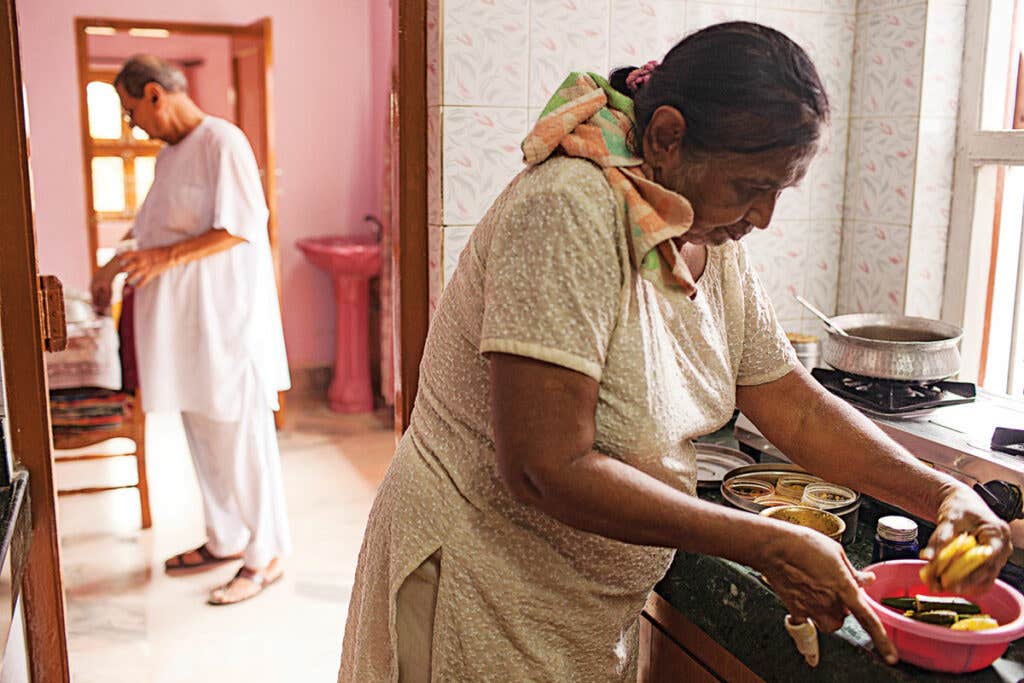
Over the next few days, we cooked all of the Sindhi dishes I'd come to love. Not once did Madhu raise the subject of the separation, but she let me know, through the zeal with which she tackled each dish with me, that we were still family. The last recipe we cooked together was Sanjiv's favorite dessert, malpura, delicate curd cheese pancakes soaked in cardamom-scented syrup. Creamy and thin, with syrup clinging to their lacy edges, they melted in my mouth. Although malpura are prepared in other parts of north India, Madhu's recipe yielded pancakes that were soft clouds on the tongue. When my visit came to an end, I was unsure of how to say good-bye, not knowing when I might return.
Adipur and Gandhidham are 500 miles north of Mumbai. The plane touched down on land that was flat and dotted with thorny acacia trees.
Through a friend, I had arranged to visit Kamla Sabhani, a Sindhi home cook whose family had settled here after Partition. Sabhani, a housewife in her 60s, met me at the door of her home with hugs before offering a traditional welcome of lentil crackers and water. She waved me into her kitchen where she was making pohp batalu jo pulao, a sumptuous dish of rice cooked in a tangy tomato and onion sauce, and seyal murgh, chicken simmered with onions in a creamy sauce, for our lunch. She started by grinding green chiles, garlic, and ginger in a mortar and pestle. This, she explained, was sonta, a seasoning base from the southern part of the Sindh upon which countless cooked vegetable and fish dishes are built. Sabhani used some of the sonta to make the pulao, sauteeing the paste before stirring in onions and tomatoes to make a sauce. To this she added rice and peas. At the very last, she blanketed the cooked rice with layers of chopped cilantro, sliced dates, caramelized onions, and fried potatoes. The rest of the sonta became a spicy base for the chicken.
We tucked in, washing everything down with glasses of lightly salted buttermilk. The chicken, served with homemade sweet cilantro chutney, was tender and fragrant. The pulao, with its ornate garnish, was luxurious, with a wonderful interplay of flavors and textures that changed with every bite. While you can find pulaos all over India, they likely originated with the former Persian rulers of the Sindh, and the dried fruit—which I'd never seen in the dish in Mumbai—spoke to the Sindh's proximity to Iran and central Asia. It was an extravagant dish, and a gracious offering for a visitor. As I ate, I reflected that while Shikarpur, the home of Savitri's memories and the wellspring of the dishes that defined Sanjiv's family, was still many miles away, this meal was as close as I was going to get, at least for now. It felt close enough.
My flight took off just past midnight, carrying me back to LA and an uncertain future. I dozed off, and when I awoke, a glance at the flight path channel indicated we were flying over Pakistan. I looked out the window. Below me in a magical starburst pattern of lights was Karachi, the capital of the Sindh, my first view of the paternal homeland my daughter might never see. She doesn't really need to, I realized then: As long as she knows the region's dishes, she will carry the Sindh with her wherever she goes.
Keep Reading
Continue to Next Story


